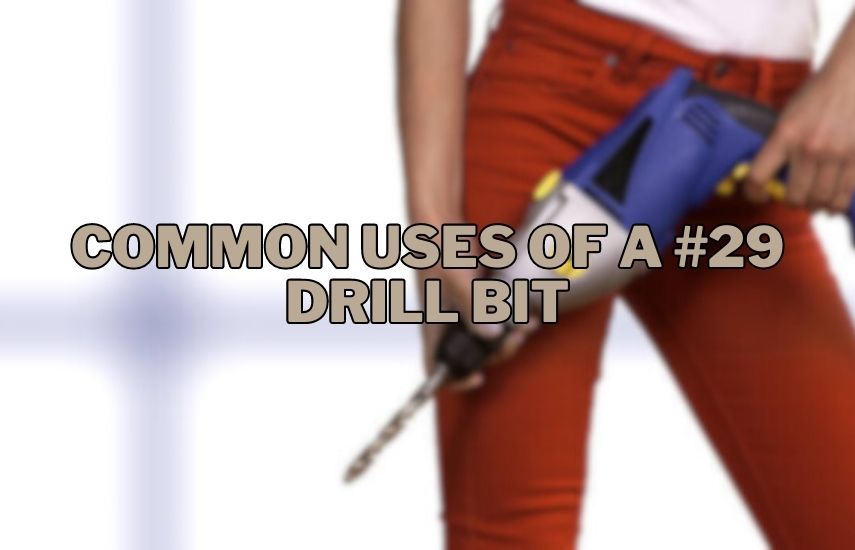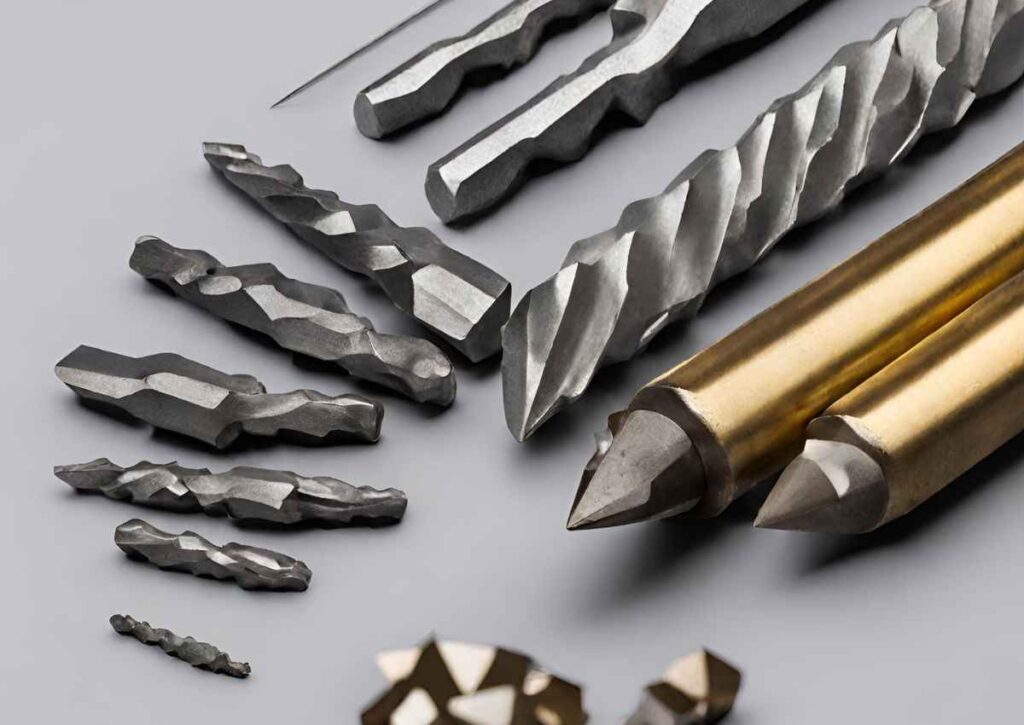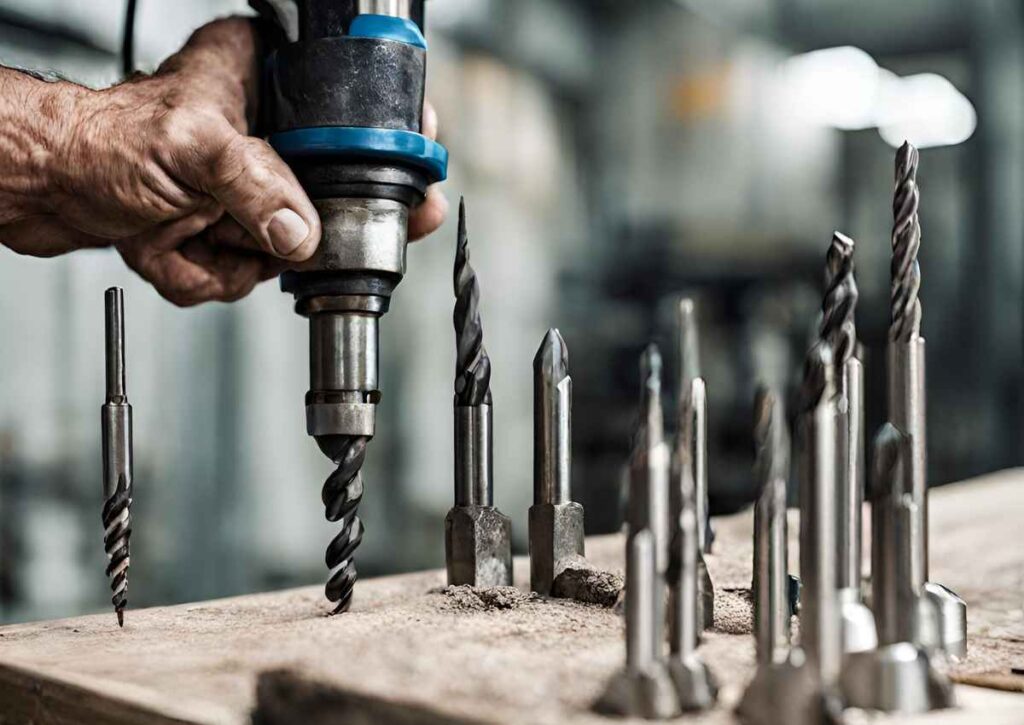Drill bits serve as fundamental tools for professionals and DIY enthusiasts, enabling the creation of holes in various materials for screws, bolts, and more.
The #29 drill bit size is a normal drill bit size. It has a diameter of about 0.1360 inches, which is 3.4544 millimeters.
Precision work like making starter holes, jewels, electronics, and model buildings is always done with it.
In this blog, i’ll explain drill bit sizes, common applications, measurements, handling and maintenance tips for drill bits.
Understanding The #29 Drill Bit Size
In the world of drill bits, the #29 bit boasts a diameter of approximately 0.1360 inches, or roughly 3.4544 millimeters.
Its specific size is a crucial standard within the wire gauge system, a prevalent method for measuring drill bits.
Grasping Drill Bit Sizes
Drill bits are categorized based on various measuring systems. Understanding these systems is essential for selecting the right bit for a specific task.
- Wire Gauge (WG) System: Drill bits in the US are marked with a number, like #29, that tells you what size they are.
- Fractional Inch System: Drill bit sizes are given in this method, which is used in the US and other places, as fractions of an inch (1/16″, 1/8″).
- Decimal Equivalent: You can write drill bit sizes in decimal form, such as 0.032″, which is the same as a #67 bit in the wire gauge method.
- Metric System: The metric system is used in many places, mostly in Europe and some parts of Asia. Drill bits are measured in millimetres, which range from 0.1mm to over 20mm.
Also Read: Is It Legal To Drill Your Own Well? Understanding The Rules
Common Uses Of A #29 Drill Bit Size

A #29 drill bit is commonly used for intricate tasks that demand precision and finesse. Its small size makes it suitable for various applications.
1. Pilot Holes
Making test holes is an important part of working with fragile materials like wood. A pilot hole is a small hole that has already been made.
It helps bigger drill bits stay on track and avoid going off track. You can make accurate pilot holes with a #29 drill bit before driving screws or making bigger holes.
It ensures the work is done correctly and keeps the material from breaking or splitting.
2. Jewellery Making
Often, jewellers and crafters work with small parts and fragile materials like beads, gemstones, and metal fittings.
They have to drill small holes to make complicated shapes and put jewellery together.
The #29 drill bit is useful for making jewellery because it lets artists drill precise holes in materials without breaking them or changing the design.
3. Electronics
Electronics enthusiasts and professionals frequently deal with tiny circuit boards or components that require precise drilling.
When working on electronic projects, creating small holes to mount components or create pathways for electrical connections is crucial.
The #29 drill bit enables them to drill accurate holes in circuit boards, ensuring proper alignment and reliable connections.
4. Model-Making
Model makers, like people who build aeroplanes, trains, or small dioramas for fun, often need to drill small holes to assemble things or make them unique.
A #29 drill bit is very useful because it makes exact holes in the small parts, which helps with alignment and improves the quality of the model as a whole.
Understanding Drill Bit Materials

Drill bits are made from various materials, each serving specific purposes based on their characteristics and strengths.
1. High-Speed Steel (HSS)
It is commonly used for general-purpose drilling in wood, metal, plastic, and other materials due to its durability.
2. Cobalt Drill Bits
It Offers enhanced heat resistance and durability, making it suitable for tough materials like stainless steel.
3. Titanium Drill Bits
Known for their prolonged lifespan and reduced friction, suitable for drilling in hard materials.
Advanced Drill Bit Features

Drill bits have several features designed to enhance their performance in different applications.
1. Split Points
Split-point drill bits are designed to keep the bit from moving around while drilling, so the holes are cleaner and more accurate.
They do this by firmly gripping the material. This design makes it less likely that the bit will stray so that it can make accurate, clean holes in various materials.
2. Flute Types
Flutes aid in chip removal during drilling and come in various configurations, such as spiral, straight, or brad-point flutes.
3. Coatings
Some drill bits feature coatings like black oxide or titanium nitride for increased durability and reduced friction.
Handling and Maintenance Tips for Drill Bits

Proper care and handling of drill bits can significantly impact their longevity and efficiency.
- Proper Storage: Storing drill bits in a dry, secure place prevents rust and damage.
- Regular Sharpening: Periodic sharpening maintains the cutting edge’s effectiveness and prolongs the bit’s life.
- Correct Application: Using the appropriate drill bit for specific materials and tasks reduces wear and tear.
Conclusion
The #29 drill bit, despite its seemingly modest size, plays a significant role in various applications, offering precision and reliability.
Understanding its sizing, applications, and the different measurement systems can aid in selecting the right bit for the job.
Drilling involves a mix of skill, understanding, and the right tools.
The #29 drill bit isn’t just a small component in the toolbox; it’s a versatile tool suited for delicate and precise tasks across various industries.
FAQs
What tasks are ideal for the #29 Drill Bit Size?
For fine jobs like manufacturing jewellery, drilling pilot holes, working with electronics and building models, the #29 Drill Bit Size is ideal.
How do I choose the right #29 Drill Bit Size for my project
Select the #29 Drill Bit Size when accuracy in small-scale drilling tasks is essential, like working with delicate materials or intricate components.
Could the #29 Drill Bit Size be used for projects with wood?
Yes, the #29 Drill Bit Size is suitable for woodworking, particularly for creating pilot holes and handling detailed woodworking tasks.
Can standard cutting tools be used with the #29 Drill Bit Size?
The #29 Drill Bit Size is standard and compatible with most standard drill machines and equipment.
What kinds of things can the #29 Drill Bit Size drill?
The #29 Drill Bit Size is versatile, working with various materials like wood, metal, plastic, and other delicate or intricate components.









